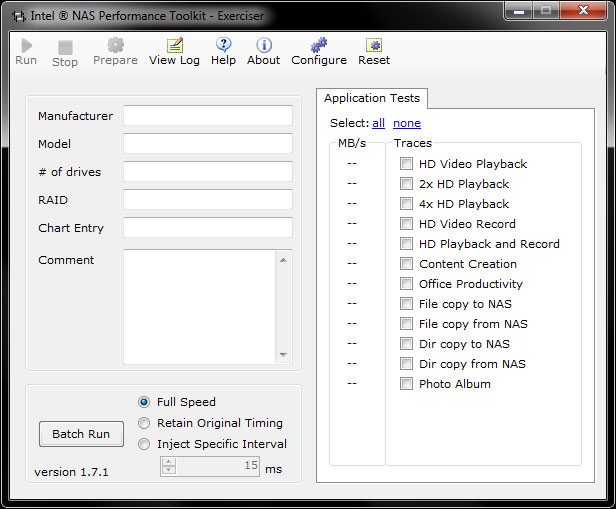Synology Diskstation DS115J 1-Bay NAS Review
Bohs Hansen / 10 years ago
Testing Method
Test system:
- Supermicro C7Z87-OCE
- Intel Xeon E3-1230Lv3
- Corsair Vengeance 8GB 1866MHz
- Corsair H100i
- BeQuiet Dark Power Pro 850W
- Kingston HyperX 240GB SSD
Disks in Product:
- Western Digital RED 6TB 3.5-inch
- Western Digital RED 1TB 2.5-inch
We would like to thank Be Quiet, Supermicro, Intel, Corsair, Kingston, Lian Li and Western Digital for supplying us with our test components.
Software used:
When testing a device of this sort, the system that we use to test with is not a major factor in its performance. The performance of the NAS box comes down to the network it is running on and its own internal hardware. With a device of this sort having so many different applications, Intel’s NASPT software covers all the bases and also gives us a set of results that we will be able to utilise and therefore give a benchmark against other similar systems in the future.
Intel NASPT (Network Attached Storage Performance Toolkit) performs its test by transferring varying sizes and quantities of data to and from the device based on twelve different scenarios.

The NAS itself will be packed with Western Digital’s latest RED NAS drives. The system that we use to run the Intel NASPT software does require us to drop the memory right down to 2 GB as any more than this leads to data caching and therefore skews the results from the NAS box.
Since this is a 1-bay NAS and it doesn’t have any eSATA connection, I can not run any raid comparison tests on this device. To increase the coverage I chose to test it with both a 3.5-inch drive with 64MB cache and a 2.5-inch drive with 16MB cache to see how big of an impact that will have on the NAS’ performance. I also tested each drive with encryption enabled. While this device isn’t really build for this sort of operation it still supports it, and I’m sure there are more than one user out there who prefer to encrypt their sensitive data, even if it means some performance loss.
In addition to measuring the performance of the NAS as it is built to be used, we have noticed that a number of users are using the USB ports to connect up secondary storage devices such as external hard drives or flash drives. This device doesn’t have any USB 3 ports but it does have two USB 2 ports. I will be testing these ports to the maximum by connection an external USB3 SSD to the port. A drive like that is sure to give us what the USB 2 port can handle.



















